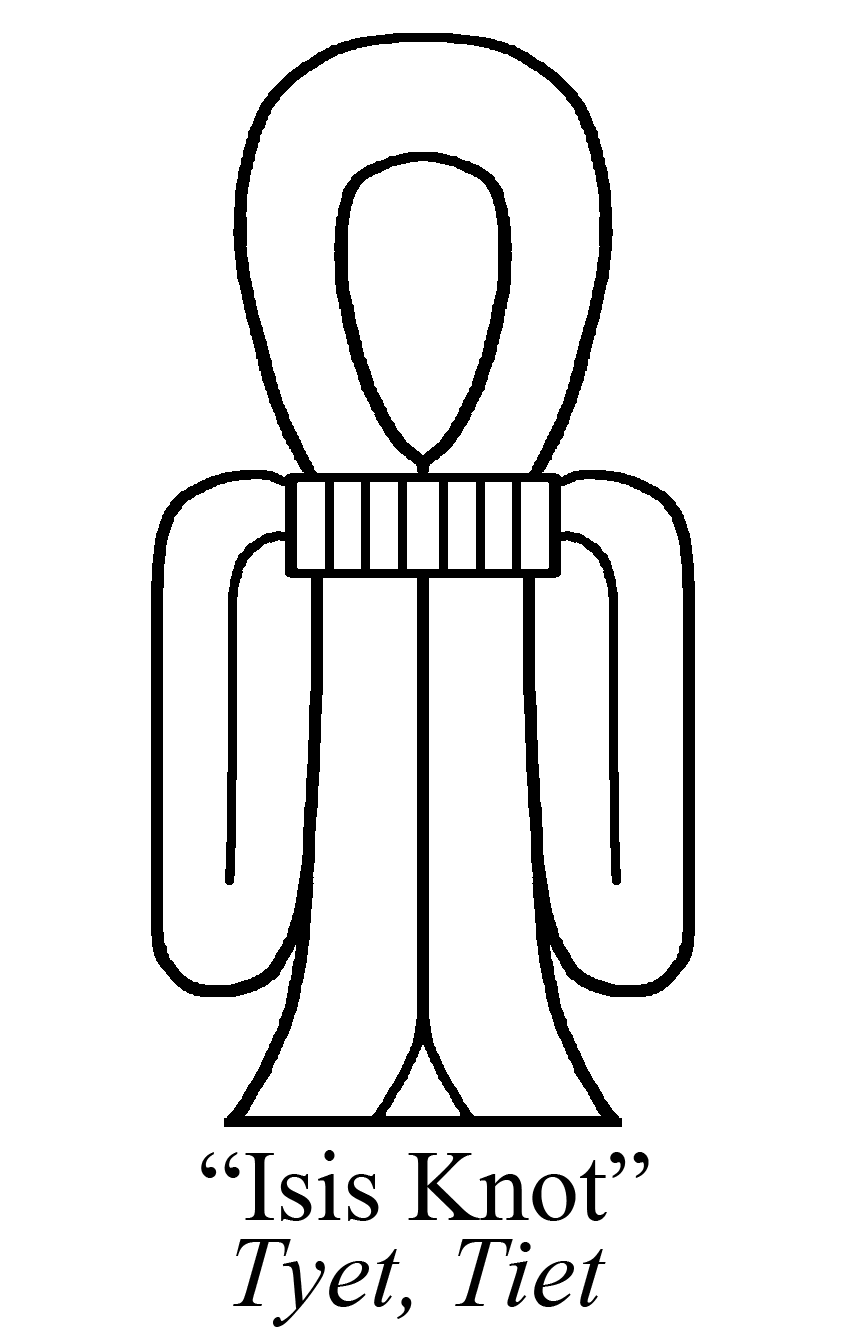|
From _Art for Eternity_, page 157 djed-pillar "An Egyptian hieroglyph, probably a manifestation of part of the spinal cord, that was a written form of the word for 'stability'. It was a commonly employed symbol in religious iconography."

 From _Reading Egyptian Art_, Wilkinson, tyet drawn by me...
From _Reading Egyptian Art_, Wilkinson, page 165
 (There is also a personified Was at Seti I's temple)
Here's a small amulet at the Brooklyn Museum featuring the Tyet:
"About the king's neck were six collars and twenty amulets wound into the six layers of linen. After a "Collar of Horus" done in sheet gold, there was a necklace of four amulets strung on gold wire. First was a red jasper "knot of Isis." According to the Book of the Dead, whoever wears such a knot will have the protection of Isis and her son Horus and will be welcomed into the next world. The red represents the blood, magic, and power of Isis. Then there was a gold djed-column with magical inscription..." (_Ancient Egyptian Magic_, pages 193-194)
At that page I show faience djed and tyet amulets at the Metropolitan Museum. |


